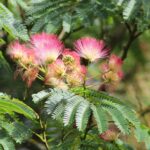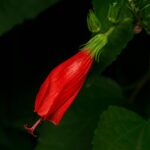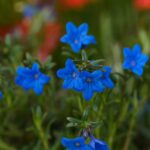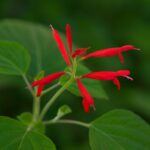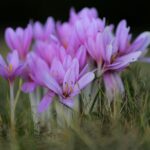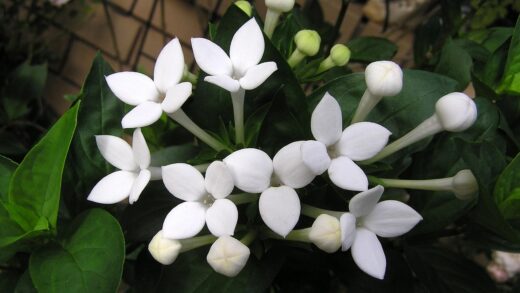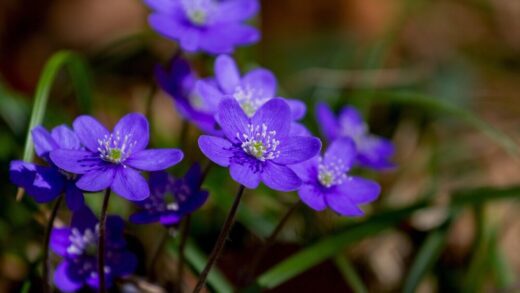The light requirement of the wood anemone is one of the most defining characteristics of its cultivation, and understanding it is absolutely essential for success. This ephemeral spring wildflower has evolved a brilliant strategy to thrive in a very specific and transient niche of light on the woodland floor. Its entire annual life cycle, from emergence to dormancy, is perfectly synchronized with the changing patterns of light created by the deciduous forest canopy above it. For the gardener, this means that replicating this unique and dynamic light environment is the key to creating a thriving colony. The wood anemone is not a plant for the sun-drenched border, nor is it one for the deepest, darkest shade; it is a plant that craves the dappled, shifting light of the early spring woodland.
The core of the wood anemone’s light strategy is its timing. It emerges very early in the spring, often when traces of snow are still on the ground, long before the deciduous trees and shrubs overhead have begun to leaf out. During this period, the forest floor is bathed in relatively bright, unfiltered sunlight. This window of light is critically important, as it is when the plant performs the vast majority of its annual photosynthesis. It uses this energy to produce its flowers and, crucially, to build up the food reserves in its underground rhizome that will sustain it through the rest of the year and fuel the next season’s growth.
As spring progresses and the canopy of the trees above begins to expand, the light conditions on the forest floor change dramatically. The bright sun gives way to a much deeper, dappled shade. This increasing shade is the cue for the wood anemone to begin its retreat. Its flowering period ends, and its foliage starts to yellow and die back. By the time the canopy is fully developed in early summer, casting the ground into deep shade, the wood anemone has completed its life cycle above ground and has entered its summer dormancy. This avoids the competition for light, water, and nutrients from larger, more dominant summer-growing plants.
Therefore, when we select a site for wood anemones in the garden, we must seek out a location that mirrors this seasonal light progression. The ideal spot is one that receives several hours of direct or bright, indirect sunlight in March and April but then transitions into partial or even full shade from May onwards. This makes them perfect candidates for planting underneath deciduous trees like oaks, maples, or birches, or on the east or north side of deciduous shrubs, where they are shielded from the intense heat and light of the summer afternoon sun.
The critical window of spring light
The entire success of the wood anemone’s year hinges on the light it receives during a very specific and relatively short period in early spring. This is its moment in the sun, both literally and figuratively. Before the leaves of the overarching deciduous trees unfurl, the woodland floor is surprisingly bright. The wood anemone has adapted to capitalize on this ephemeral window of opportunity, completing the most energy-intensive parts of its life cycle – growth, flowering, and the bulk of its photosynthesis – during these few precious weeks. This period is the engine that drives the plant for the entire year.
More articles on this topic
The intensity and duration of this spring light directly impact the plant’s vigor and its ability to flower profusely. If the plants receive enough sunlight during this phase, they can create a surplus of energy, which is then stored in the rhizomes. A well-charged rhizome is what ensures a strong and healthy plant that will not only return the following year but will also have the resources to spread and form a larger clump. Insufficient light during this critical window will result in a weaker plant, with sparse foliage, few or no flowers, and a diminished capacity to perennialize.
Therefore, when choosing a planting location, it is vital to observe the light patterns in your garden during the early spring, not just in the summer. A spot that seems deeply shaded in July might be quite sunny in March. The ideal location is one that is open to the sky in the early part of the year, receiving at least four to six hours of sunlight. This is why planting under high-canopied deciduous trees is so effective. The bare branches in spring allow ample light to reach the ground, creating the perfect conditions for the anemones to flourish before the shade deepens.
It is also important to consider the companions planted nearby. Avoid planting wood anemones near evergreen trees or shrubs, such as conifers or rhododendrons, which cast dense shade year-round. This would deprive the anemones of the essential spring sunlight they need. The successful cultivation of this plant is a lesson in understanding the dynamic, four-dimensional quality of a garden, where light is not a static condition but a shifting element that changes with the seasons.
The transition to summer shade
Just as crucial as the bright light of spring is the arrival of shade in the summer. The wood anemone is not adapted to withstand the heat and intense sunlight of the summer months. The deepening shade cast by the newly emerged leaves of the deciduous canopy provides a necessary protection for the plant as it begins to wind down its active growth cycle. This transition from light to shade is the environmental cue that triggers the onset of the plant’s summer dormancy.
More articles on this topic
The foliage of the wood anemone is delicate and can easily be scorched by the strong summer sun. If planted in a location that remains sunny throughout the year, the leaves will often burn and wither prematurely. This premature decline of the foliage is highly detrimental because it cuts short the vital period of photosynthesis. The plant is forced into dormancy before it has had a chance to store an adequate amount of energy in its rhizome, which will severely weaken it for the following season. The shade provides a cooler, moister environment that allows the foliage to persist for as long as possible and die back naturally at its own pace.
This requirement for summer shade makes the wood anemone an ideal plant for underplanting deciduous trees and shrubs. It fills a niche that many other plants cannot, providing beauty and interest in the early spring before the larger woody plants take center stage. This creates a layered and efficient planting scheme, where different plants occupy the same space at different times of the year, maximizing the garden’s potential. They are perfect companions for later-emerging, shade-loving perennials like hostas, ferns, and brunnera, which will begin to unfurl their own leaves just as the anemones are beginning to fade, covering the space left by the dormant plants.
When planning your garden, think about this succession. The area where the wood anemones put on their spring show will become the backdrop for other plants in the summer. The shade they require is not a limitation but an opportunity to create a dynamic and evolving garden picture. By providing this essential summer shade, you are completing the environmental puzzle that the wood anemone needs to thrive, ensuring its long-term health and its welcome return year after year.
Signs of incorrect light exposure
The wood anemone is quite communicative, and it will often display clear signs if it is not receiving the correct amount of light. Learning to read these signals is an important skill for the gardener, as it allows for timely corrections to be made. One of the most common signs of insufficient light is a lack of flowering. If your wood anemones are producing healthy-looking leaves but are failing to produce any, or very few, flowers, it is a strong indication that they are not receiving enough direct sunlight during their critical spring growth period. The plants may have enough light to survive and produce foliage, but not the surplus energy required for the demanding process of creating blossoms.
Another symptom of too little light is etiolation, where the plant’s stems become unnaturally long and spindly as they stretch in search of more light. The foliage may also be a paler shade of green than is typical. Over time, a colony growing in deep, year-round shade will gradually dwindle and may eventually disappear altogether. If you observe these symptoms, the only effective solution is to carefully lift and move the rhizomes during their summer dormancy to a new location that receives more spring sunlight.
Conversely, it is also possible to provide the wood anemone with too much light, specifically too much sun during the summer. The most obvious sign of this is scorched foliage. The leaves may develop brown, crispy edges, or large brown patches, and they will die back much earlier than they should. This is a clear indication that the location does not provide the necessary shade and protection from the heat of the summer sun. The plant is being forced into dormancy prematurely, which, as mentioned, is very damaging to its long-term health.
If you see signs of scorching, you have a few options. In the short term, you could try to provide some artificial shade, perhaps by strategically placing a taller, potted plant nearby. However, the long-term solution is, again, to move the plants to a more suitable location. The ideal site is a balancing act – a place that threads the needle between having enough sun in the spring and enough shade in the summer. Observing your plants’ health and responding to these visual cues is the best way to fine-tune their position and ensure their happiness.
Artificial manipulation of light
In some garden situations, it may be necessary or desirable to actively manage the light conditions to create a suitable habitat for wood anemones. This is most often achieved through the careful pruning of overhead trees and shrubs. If you have a potential planting site under a deciduous tree, but the canopy is extremely dense, you might consider selectively thinning some of the branches. This practice, known as crown lifting or canopy thinning, can allow more dappled light to penetrate to the ground level, not just in spring but throughout the year, benefiting a wide range of woodland plants.
This type of pruning should be done thoughtfully and, for large trees, with the help of a professional arborist. The goal is not to remove all the shade, but to create a more dynamic, filtered light. By removing some of the lower limbs or thinning out congested areas of the canopy, you can significantly improve the growing conditions for understory plants like the wood anemone. This is a way of actively curating the light environment to foster the specific type of ecosystem you wish to create in your shade garden.
It is also possible to use other plants to manipulate the light. For instance, you could plant wood anemones on the north side of a tall, herbaceous perennial like a miscanthus grass. In the spring, when the anemones are active, the grass is still just a small clump, allowing plenty of light to reach them. As summer progresses, the grass grows tall and its arching leaves will cast the necessary shade over the now-dormant anemones. This is a creative way to achieve the required seasonal light shift without relying on woody plants.
Ultimately, working with the light you have is the most sustainable approach. The most successful wood anemone plantings are those that are sited in a location that naturally provides the correct seasonal light patterns. Before you plant, take the time to map the sun and shade in your garden throughout the day and, ideally, throughout the seasons. This initial investment in observation and planning will allow you to place your wood anemones in a location where they will not just survive, but truly thrive, performing their enchanting spring dance for years to come.







